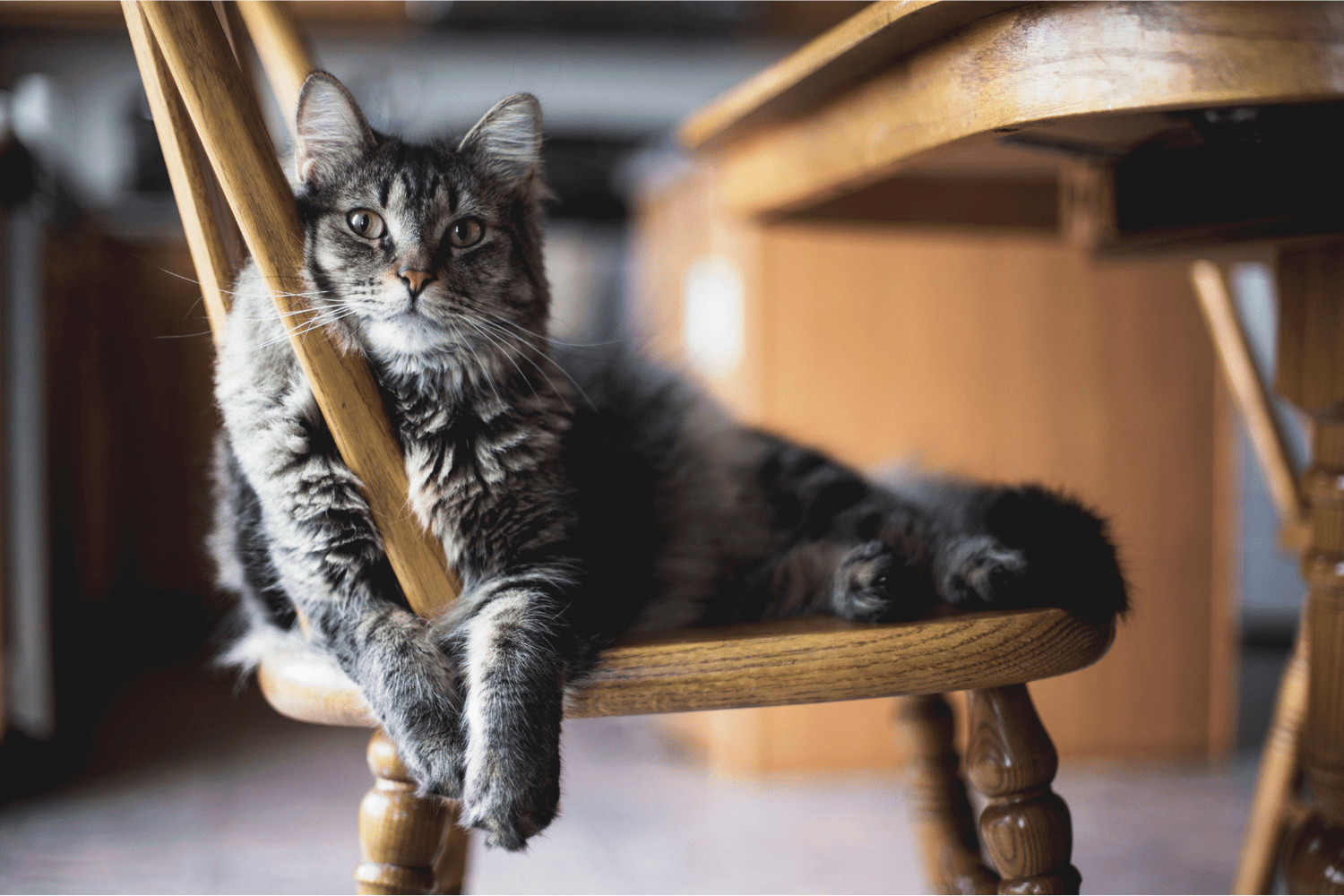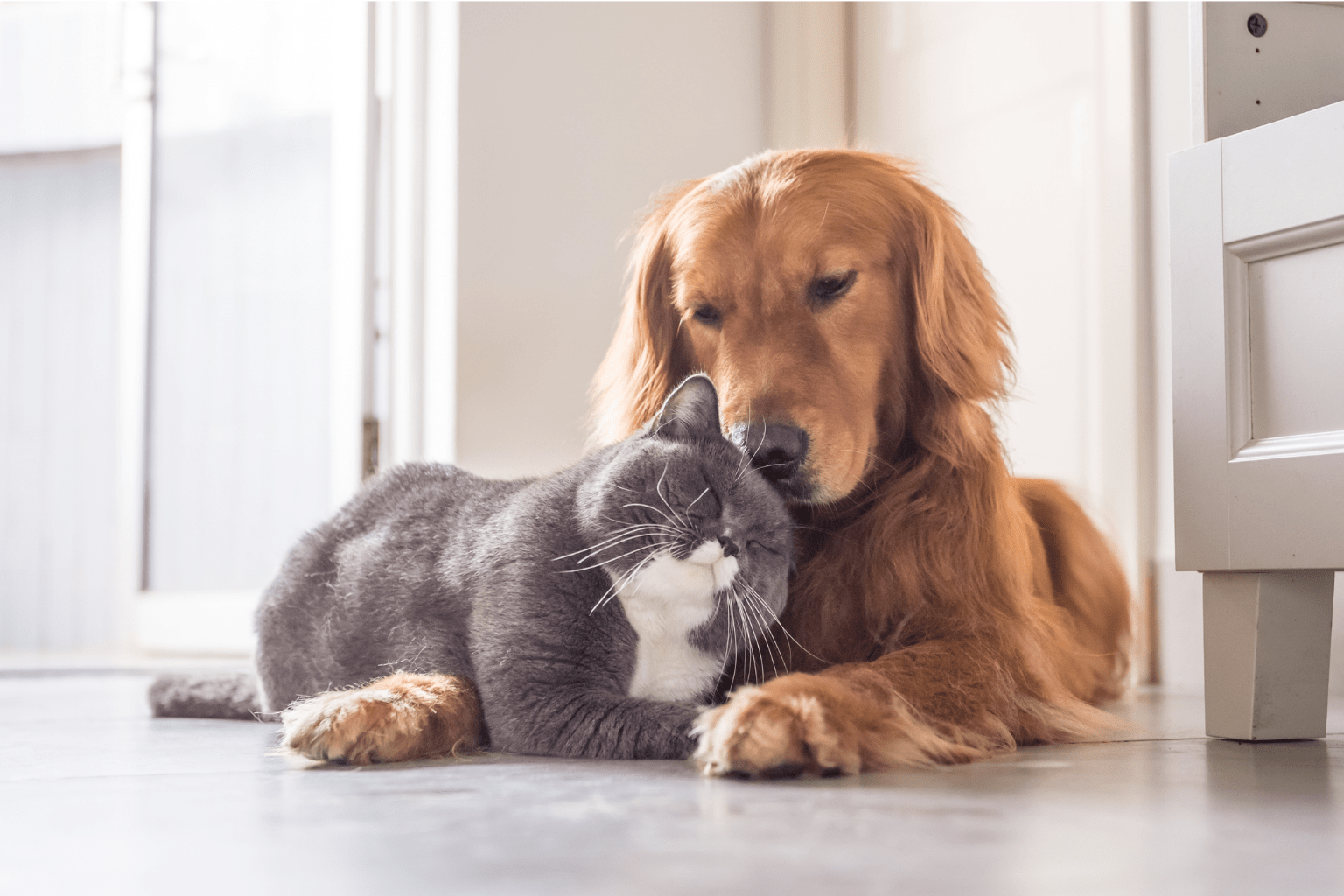Key Takeaways
- Changes in a cat's behavior or appetite can be early signs of liver disease.
- Elevated liver enzymes detected through bloodwork indicate potential liver issues.
- Combining veterinary care with natural support can improve a cat's liver health.
- Recognizing symptoms early is crucial for effective management of liver disease in cats.
Table of Contents
- What Is Liver Disease in Cats?
- Early Warning Signs, How to Spot Liver Trouble in Your Cat
- What Causes Liver Disease in Cats? (And Who's Most at Risk)
- Common Types of Feline Liver Disease, What's Going On Inside?
- Diagnosing Liver Disease, What to Expect (and How to Prepare)
- Conventional Treatments vs. Holistic Support, What's Best for Your Cat?
- Nutritional Strategies, Feeding a Cat With Liver Disease
Cat and Liver Disease, Your Practical Guide to Natural Support and Happier, Healthier Cats
When Milo started hiding under the couch and turning away from his favorite salmon treats, his mom Rachel knew something wasn't right. Three days later, the vet's bloodwork revealed elevated liver enzymes, a wake-up call that led to a journey combining veterinary care with gentle, natural support. If you're noticing subtle changes in your cat's behavior or appetite, understanding cat and liver disease could be the key to helping your feline friend feel their best again. Cat Hepatic Liver Support Remedy can be a gentle way to support your cat's liver health alongside your vet's recommendations.
The liver works overtime as your cat's detox powerhouse, but when it struggles, the signs aren't always obvious. Let's explore how to recognize trouble early, support your cat's natural healing, and work alongside your vet for the best possible outcome. For comprehensive care, consider the Cat Liver Health & Immune Support Bundle to help with liver function, detox, and immune support during your cat's recovery.
If you want to dive deeper into the topic, check out this helpful overview on exploring liver problems in cats, what every pet parent should be aware of for additional insights and tips.
What Is Liver Disease in Cats?
Think of your cat's liver as their personal chemical processing plant, it filters toxins, stores vitamins, produces proteins, and helps digest fats. When this vital organ becomes inflamed, damaged, or overloaded, we call it liver disease. This umbrella term covers everything from sudden, severe problems (acute) to slow-developing issues (chronic) that build over months or years.
Over 10% of senior cats develop some form of liver disorder, making it one of the most common health challenges our feline friends face. The good news? Many cats with liver issues can live comfortable, happy lives with proper support.
Quick Answer, What Does the Liver Do?
- Detox Master: Filters harmful substances from blood
- Nutrient Storage: Stores vitamins A, D, E, K, and B12
- Protein Producer: Makes essential proteins for blood clotting
- Digestion Helper: Produces bile to break down fats
| Liver Function | How Disease Affects It | What You Might Notice |
|---|---|---|
| Detoxification | Toxins build up in bloodstream | Lethargy, confusion, head pressing |
| Bile Production | Poor fat digestion | Yellow skin/eyes, pale stools |
| Protein Synthesis | Reduced blood clotting | Easy bruising, slow healing |
| Nutrient Storage | Vitamin deficiencies | Poor coat, weakness |
Early Warning Signs, How to Spot Liver Trouble in Your Cat

Cats are masters at hiding illness, but liver issues in cats create subtle changes that observant pet parents can catch early. The key is knowing what "normal" looks like for your specific cat, their usual eating habits, favorite nap spots, and daily routines.
Behavioral red flags often appear first: hiding more than usual, sleeping in different spots, or showing less interest in play. Physical signs follow, including the classic yellowing of gums and eyes (jaundice), which happens when bile pigments accumulate in the bloodstream.
Top 7 Warning Signs, Check If You Notice These:
- Loss of appetite for more than 24 hours
- Yellow tinge in eyes, gums, or inner ears
- Increased thirst and urination
- Vomiting, especially yellow foam
- Bloated or tender belly
- Head pressing against walls or furniture
- Unusual hiding or behavioral changes
Head pressing deserves special attention, when cats push their heads against hard surfaces, it often signals brain toxicity from liver dysfunction. This behavior, along with jaundice or complete food refusal, warrants immediate veterinary attention.
What Causes Liver Disease in Cats? (And Who's Most at Risk)
Understanding what causes liver disease in cats helps us protect our feline friends before problems develop. The most common culprit? Rapid weight loss or prolonged fasting, which forces the liver to process stored fat faster than it can handle, leading to fatty liver disease (hepatic lipidosis).
Overweight cats face the highest risk, especially when stress, illness, or dietary changes cause them to stop eating. Even missing meals for 2-3 days can trigger liver problems in cats over 7 pounds. Other major causes include toxin exposure (lilies, certain medications, household chemicals), infections, and underlying conditions like diabetes or hyperthyroidism. If your cat is struggling with weight or thyroid issues, the Cat Weight Gain & Hyperthyroid Bundle can help support healthy weight and metabolism, reducing liver strain.
| Risk Factor | Kitten (0-1 year) | Adult (1-7 years) | Senior (7+ years) |
|---|---|---|---|
| Congenital issues | High (liver shunts) | Low | Low |
| Fatty liver disease | Low | Moderate (if overweight) | High |
| Toxin sensitivity | High | Moderate | High |
| Secondary diseases | Low | Moderate | High |
Multi-cat households face additional challenges, as stress from territorial disputes or resource competition can trigger appetite loss. Indoor cats who suddenly refuse food due to litter box issues, new pets, or household changes are particularly vulnerable to developing liver failure symptoms in cats within days. For cats experiencing stress or anxiety, the Cat Anxiety & Stress Relief Bundle may help promote calm and support healthy eating habits.
Common Types of Feline Liver Disease, What's Going On Inside?
Fatty liver disease (hepatic lipidosis) tops the list as the most common liver problem in cats. When cats stop eating, their bodies break down fat stores for energy, overwhelming the liver with more fat than it can process. This creates a dangerous cycle, the sicker the liver gets, the less likely the cat is to eat.
Cholangitis and cholangiohepatitis involve inflammation of the bile ducts and surrounding liver tissue, often triggered by bacterial infections or immune system dysfunction. These conditions typically develop slowly, with cats showing gradual weight loss and intermittent vomiting over weeks or months.
| Type of Liver Disease | Primary Trigger | Typical Age Group | Key Symptoms |
|---|---|---|---|
| Fatty Liver Disease | Prolonged fasting/stress | Middle-aged, overweight | Rapid onset, yellow eyes |
| Cholangitis | Infection/immune issues | Middle-aged to senior | Gradual weight loss, fever |
| Liver Cancer | Age/genetic factors | Senior cats (10+) | Bloated belly, weakness |
| Congenital Shunts | Birth defects | Kittens/young adults | Poor growth, head pressing |
Liver cancer and congenital portosystemic shunts represent the more serious end of the spectrum. Cancer typically affects senior cats and may cause a visibly enlarged abdomen, while congenital shunts, abnormal blood vessels that bypass the liver, usually show up in young cats with poor growth and neurological symptoms.
Bailey, a 12-pound tabby, developed fatty liver disease after her family moved homes. The stress caused her to hide and refuse food for four days. With immediate veterinary intervention, nutritional support, and gentle natural remedies to support her body's healing process, Bailey gradually returned to her normal eating routine within three weeks.
Diagnosing Liver Disease, What to Expect (and How to Prepare)

Your vet becomes a detective when liver failure cat symptoms appear, using multiple tools to piece together what's happening inside your cat's body. The process typically starts with a thorough physical exam, checking for yellow discoloration, abdominal pain, and enlarged organs you can't see or feel at home.
Bloodwork reveals the most crucial clues, liver enzymes like ALT and AST show cellular damage, while bilirubin levels indicate how well bile is flowing. High numbers don't always mean dire outcomes, but they guide treatment decisions. Ultrasound imaging helps visualize liver size, texture, and blood flow patterns that blood tests can't detect. For a deeper understanding of related feline health issues, you may also want to read about cat kidney disease symptoms and how they compare to liver disease.
| Test Type | What It Shows | Prep Needed |
|---|---|---|
| Blood Chemistry Panel | Liver enzymes, bilirubin levels | 12-hour fasting |
| Complete Blood Count | Infection, anemia signs | None |
| Ultrasound | Liver size, texture, blood flow | Light sedation possible |
| Bile Acid Test | Liver function efficiency | Specific feeding schedule |
Prepare for your vet visit by tracking symptoms for 3-5 days beforehand. Note eating patterns, bathroom habits, and energy levels. Bring a list of all medications, treats, and any household changes that might have triggered the illness.
Communication Tip: Ask your vet to explain numbers in terms of your cat's daily life. Instead of just hearing "elevated ALT," ask "What does this mean for Luna's appetite and energy over the next week?"
Biopsy becomes necessary only when blood tests and imaging can't pinpoint the cause. Most cats with liver issues in cats respond well to initial treatment based on less invasive testing, making tissue sampling a last resort rather than a standard procedure. For more on the science behind feline liver disease, see this peer-reviewed article on feline hepatic disorders.
Conventional Treatments vs. Holistic Support, What's Best for Your Cat?
Veterinary medicine typically addresses cat and liver disease with prescription diets, IV fluids, and medications to support liver function and manage symptoms. These interventions work quickly to stabilize cats in crisis, providing essential nutrients and hydration when normal eating becomes impossible.
Holistic approaches focus on supporting the body's natural healing mechanisms through gentle remedies that work alongside conventional care. Our Cat Hepatic Liver Support remedy may help support liver detox processes and overall wellness without the potential side effects of pharmaceutical interventions. Explore more natural cat supplements for treating common health issues in cats and kittens to complement your cat's recovery plan.
| Approach | Primary Focus | Timeline | Best Used For |
|---|---|---|---|
| Conventional Care | Immediate stabilization | Hours to days | Acute crisis, severe symptoms |
| Holistic Support | Body's healing process | Days to weeks | Recovery support, prevention |
| Combined Approach | Comprehensive healing | Varies by case | Optimal outcomes, reduced relapse |
The most successful outcomes often combine both approaches. Fiona's 8-year-old Persian needed emergency IV fluids for severe dehydration, but gentle homeopathic support helped maintain his appetite and energy during the weeks-long recovery process that followed.
Partnership between your veterinarian and natural support creates the strongest foundation for healing. While prescription treatments address immediate medical needs, holistic remedies may support long-term liver health and help prevent future episodes. For a scientific perspective on integrative approaches, review this study on feline liver disease management.
Nutritional Strategies, Feeding a Cat With Liver Disease
Feeding a cat with liver disease requires precision and patience. Small, frequent meals every 3-4 hours reduce the workload on the compromised liver while ensuring consistent nutrient intake. Even tiny amounts of food help prevent the dangerous fat mobilization that worsens fatty liver disease. If your cat is struggling with digestive issues or constipation, the Cat Digestive Health Bundle can help support healthy digestion and regularity during recovery.
High-quality, easily digestible proteins become crucial, but the amount matters more than the source initially. A cat eating one tablespoon of food every few hours recovers faster than one refusing larger portions. Warm food slightly to enhance aroma and palatability without making it hot.
| Feeding Approach | Pros | Cons | Best For |
|---|---|---|---|
| Commercial Hepatic Diets | Veterinary formulated, convenient | Limited flavor options, expensive | Severe cases, busy households |
| Home-Prepared Meals | Customizable, fresh ingredients | Time-intensive, needs vet guidance | Picky eaters, long-term management |
| Combination Method | Flexibility, variety | Requires monitoring | Most cats during recovery |
If your cat refuses food for 24 hours, contact your veterinarian immediately. Appetite stimulants, anti-nausea medications, or even temporary feeding tubes may become necessary to break the dangerous cycle of liver fat accumulation.
Hand-feeding works for many cats who've lost interest in their bowls. Offer food on your finger or a small spoon, allowing the cat to lick rather than forcing chunks. Some cats respond better to baby food (chicken or turkey, no onion or garlic) as a bridge back to regular eating. For more tips on supporting your cat's overall health, see these 7 tips for preventing kidney disease in cats, which can also benefit liver health.
Not a substitute for professional veterinary advice.
Frequently Asked Questions
What are the early signs of liver disease in cats that pet owners should watch for?
Early signs often include changes in behavior like hiding, reduced appetite, or turning away from favorite foods. You might also notice subtle weight loss or less energy. Spotting these early helps you get your cat the care they need sooner.
How do elevated liver enzymes detected through bloodwork indicate liver problems in cats?
Elevated liver enzymes in bloodwork suggest the liver is working harder or under stress, which can mean inflammation or damage. While not a diagnosis on their own, these results help your vet identify potential liver issues and guide further testing or care.
What natural support options can be combined with veterinary care to improve a cat's liver health?
Gentle homeopathic remedies designed to support liver function can complement your vet’s treatment. Nutritional strategies like feeding smaller meals and limiting toxins also help. Together, these approaches support your cat’s natural healing without replacing professional advice.
How does liver disease affect a cat's overall health and what are the common symptoms to recognize?
Liver disease can impact digestion, energy, and toxin processing, leading to symptoms like jaundice, vomiting, weight loss, and changes in behavior. Recognizing these signs early allows for timely support that helps maintain your cat’s comfort and quality of life.



